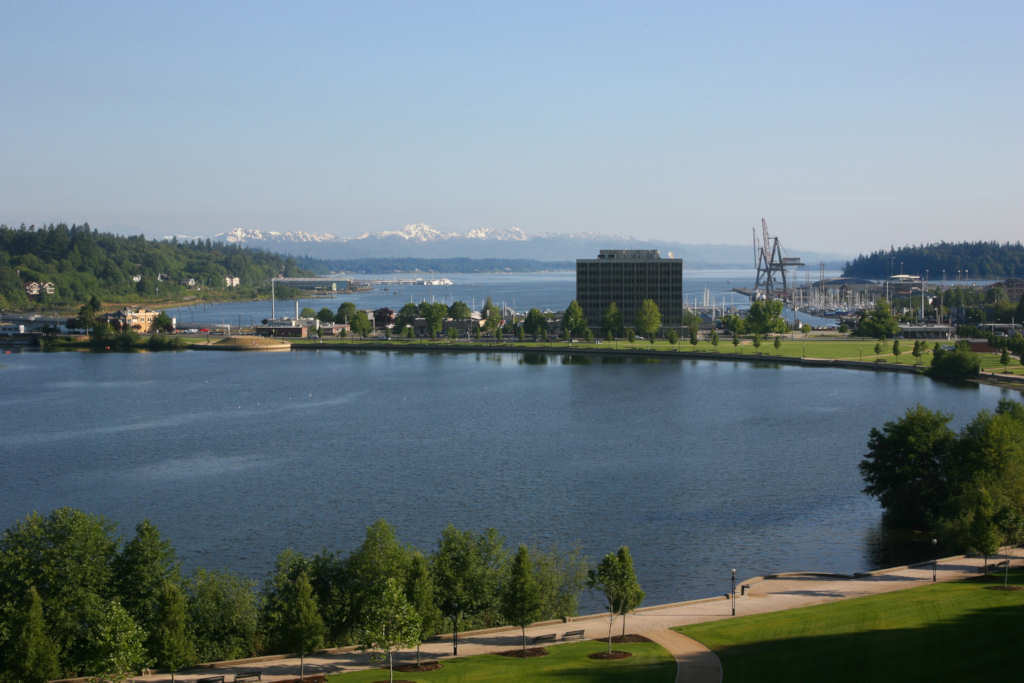Issues, Impact & Assumed Benefits - CLIPA White Paper (part 1)
Water Quality Issues
Incomplete and misapplication of the science within the CLAMP 2009 Capitol Lake Alternatives Analysis – Public Review Draft (CLAMP study) includes the assumed benefits to water quality created by such a reversion. WAC 173.201A-020 provides water quality definitions for a lake versus a river. Different standards exist for lake systems compared to river systems.
The CLAMP study applied the river definition to Capitol Lake. In doing so, it misreports that the mud flats concept provides a water quality benefit, even though there is no change in pollutant or sediment loading. Instead, these “reported benefits” occur because the standards of measure are arbitrarily (and inappropriately) changed from “lake” standards to “river” standards. The CLAMP study fails to state this major change.
Second, the Department of Ecology (DoE) as a member of CLAMP advisory committee is conceding an argument it has objected to consistently over the past 40 years – the argument that “the solution to pollution is dilution.” It is a well known fact of lake ecosystems that lakes must be managed because their tendency is to fill naturally. In the case of Capitol Lake, this is caused by accumulated sediment deposition from the upper Deschutes; in other lakes, the filling may be due to nutrients and plants. This management requirement was recognized by the State when Capitol Lake was created, but not acted on over the past 25 years.
The recent CLAMP study confuses this issue, and misses the opportunity to identify and address sources of water quality and sedimentation problems and viable solutions.
The CLAMP study properly recognizes that “water quality violations related to dissolved oxygen are predicted to occur whether the system is managed as a lake or as an estuary.” (p.74) Destruction of Capitol Lake and the 5th Avenue dam is no solution to this challenge. However, a comprehensive watershed management plan is a solution, which we advocate and further explain below.
The key take-away points are:
- The solution to pollution is NOT dilution.
- Changing the definition of a water quality standard does not by itself change water quality.
Impact on Public Facilities & Economy
The CLAMP study insufficiently addresses the lost public investment of over $80 million in public facilities, should Capitol Lake be allowed by design or default to return to a tidal mud flat environment. In addition to the existing investments, the CLAMP study does not address the newly planned public investments, such as that of the remodeled Percival Boardwalk.
Of great concern, the costs and impacts are missing from the study for the every three-year dredging which would be required to keep Percival Landing and the public docks open, and to upgrade/replace the transportation, storm drainage systems, and other infrastructure that is currently designed for a lake environment.
The 2009 CLAMP study proposal would place the entire public investment in Capitol Lake, the North Capitol Campus, the Olympia waterfront, and lower Budd Inlet in irreversible jeopardy.
The key take-away points include:
- Over $80 million investment in infrastructure put at risk.
- Recreation and public events would decline dramatically.
- The Port of Olympia might have to discontinue ocean shipping.
- Downtown and waterfront businesses would lose business.
- Extensive, active boating would decline as a recreation and business stimulus.
Misclassification of Reversion and Assumed Benefits
The CLAMP study’s conclusion that the reversion of Capitol Lake to a tidal mud flat environment would be an environmental benefit compared to the planned Capitol Lake management program is unrealistic. The widely circulated images of emergent vegetation are misleading.
A Deschutes Watershed reversion should more accurately be termed a “tidal basin,” not an “estuary” as the CLAMP study describes it. The future of such action would be similar to what is now occurring in the Mud Bay and East Bay estuary environments, not the Nisqually Delta as has been suggested. Our organization strongly supports funding directed at appropriate estuary locations such as the Nisqually Delta.
The location at the southernmost end of Puget Sound would result in continued accumulated deposits in lower Budd Inlet with the removal of the dam. The sediment would not be carried away by currents in the manner that occurs at Nisqually.
In this scenario, the CLAMP study did not account for 30% of the sediment dispersal. It stated that it just “dissipated.” However, upon questioning this assumption, we were told by GA that this sediment does not “dissipate,” rather it would stay within Budd Inlet, filling in the western side of the inlet. The science supports this, indicating that sediment tends to “clump” in salt water much more than fresh water. With the two daily incoming tides, removal of the dam could lead to accelerated accumulation of sediment in the lower Budd Inlet than with the dam.
The CLAMP study acknowledges that the transition from the initial process of estuary formation to the time when it would produce any potentially measureable environmental benefits would be 50-plus years. Even then, those benefits would be disrupted every three years, according to the study, by the need to dredge the lower Budd Inlet portion of the proposed Deschutes Watershed tidal mud flats.
Issues, Impact & Assumed Benefits - CLIPA White Paper
by: CLIPA Capitol Lake Improvement & Protection Assn.Water quality issued, economic impact, and assumed benefits of the reversion of Capitol Lake to a tidal mud flat environment. This is part of the CLIPA White Paper, a plan for ongoing management of Capitol Lake.


